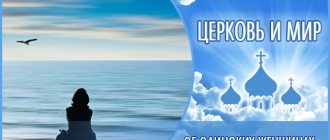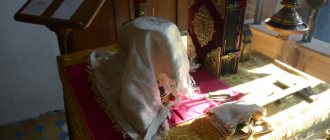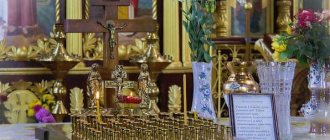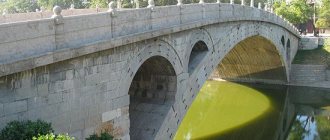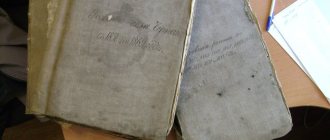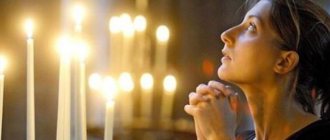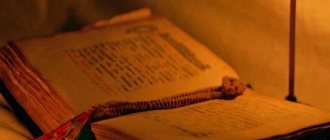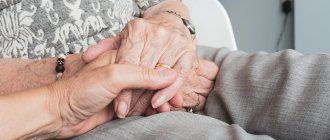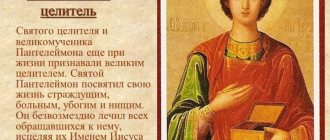Energy sources and their channels
Energy enters the central channel of a person (any material body), the flow of energy in the central channel is a prerequisite for human life.
This energy has a structure - 10 separate channels.
Life Channel
In a newborn baby, this channel is 40% (which means it can be greater than 40%).
With age, the level of the Life channel decreases. For three reasons.
- Psychosomatics. Our negative emotions reduce the level of the chakras, and they in turn reduce the overall level of energy flow and its channels.
- Karma. Karma is the energy of limitations. Very different. One of them is reducing the Life channel by 5-10%.
- DNA defects. The canal is reduced depending on the severity of the defect by up to 20%. (Steve Hawking). On average, by 5-10% But the level of this channel (like any other) can both fall and increase throughout life.
This channel is the object of my observation and control (with the restoration of certain parameters, this channel grows).
Channel of Plenty
This is a channel of material wealth.
- Can have a maximum of 100% (Bill Gates),
- Tom Hanks - 70%,
- Olga Buzova - 90%.
This information is as of today (12/5/2020). Tomorrow all channels may change their meaning.
Talent Channel
This channel (like the previous ones) has many small talents, since there are a huge variety of these talents - singing, drawing, dancing, various handicrafts, abilities in science, and so on.
The maximum level of this channel is 100%.
These energies are called personal.
Marriage Channel
At the maximum level of this channel (40%), people decide to live together. If this level remains maximum, the couple lives happily. When this level drops, the spouses will begin to irritate each other in one way or another.
If the value is zero, the person will live alone.
Roda Channel
This channel determines the number of living blood relatives.
- If the channel is small, then there are few such relatives - parents, brothers, sisters.
- When the channel is large, it accommodates the spouse and children.
Sometimes, according to the scenario, there are children, but Rod’s channel is too small for the child, then someone has to leave the channel—the parents or one of the brothers or sisters may die. Or your spouse leaves (he is also added to the channel after the birth of the first child).
Birth of Life Channel
- The Birth of Life Channel is turned on before the birth of a child.
- If conception is inappropriate, the channel is absent (equal to zero).
These energies are called family energies.
Freedom Channel
This channel has two main ones - social Freedom and physical.
- A 100% level of social Freedom allows a person to move around the world.
- 80% are within the continent.
- 40% - within the region, country
- 20% - within the city.
- 1% - prison, the person is chained to a bed.
The level of physical freedom speaks of freedom of arms, legs and body.
If the leg freedom channel falls, they will develop some kind of pathology. It's the same story with hands. To make it difficult for a person to move, but with intact arms and legs, they will add extra weight.
Mastery Channel
This channel also has many channels, since human activities are as diverse as possible.
Popularity Channel
The maximum channel level from the Popularity Source is 100%.
It has two channels: virtual popularity and face-to-face.
Power Channel
- 100%-90% - president, king, dictator of the country;
- 70-80% - governor;
- 50% - mayor of the city;
- 40% - head of a large enterprise.
These energies are called social.
Day of Remembrance
The saint is glorified on November 14 (27). Another day of his commemoration is the second Sunday of Lent. The symbolism of the date is that a week before the church celebrates the Triumph of Orthodoxy - the victory over iconoclasm. Palamas, as it were, continues this line of struggle against heresies, having at one time defeated the Barlaamites.
What does the level of Source channels depend on during life?
From karma. The energy of Karma either compresses or unclenches these channels - we get married, divorced, become richer, poorer, etc. All these events are written into our contract. And Karma fulfills it clearly.
At the age of 14 I started playing guitar and singing in a band. This activity absorbed me completely - I barely finished school. Having entered college (yes, such a funny contradiction - I have a low average score in my certificate), I continued to study music.
At the age of 25, I abruptly quit this activity and still haven’t returned to it.
- At 12 my music channel was 80%
- in 14 - 100%.
- at 25 years old - 0%.
Karma energy has a constant level throughout life (if you do not start to reduce it) - 100%.
This means that if some channel of mine fell (Karma crushed it), then some channel grew (Karma left from there). And so it happened - my Rod channel grew up along with the Birth of Life channel and sent a wife and child into my 27 years.
- My Life Channel at 35 was 20%. I had tonsillitis, which made my life very difficult.
- At 38 years old, the Life channel has grown to 40%. At the age of 40, I came up with the idea of cutting out my tonsils. After the operation, I felt like I was born again.
- What has decreased? The Marriage channel has decreased from 40% to zero.
Since I was an exemplary family man with a huge sense of Duty, in order for me to leave the family, they slipped me a young beautiful student (she had just graduated from university) - I fell head over heels in love. And a year later he left the family. But the Brak channel grew slightly - 5%. Therefore, the first years of the new family life were difficult, frankly speaking.
And my Life channel fell from 40% to 10% within 5 years (45-50 years), as the Abundance channel increased from 30% to 50%.
But then the time came to remove the block, and all my channels began to grow (the Abundance channel fell sharply). To my great pleasure. So the level of my Karma began to fall.
News about all Sources of Divine energies on Earth at the link.
Life [1]
The future saint was born in 1296 and received his education in Constantinople.
After the early death of his father, Senator Constantine, in 1301, Gregory fell under the patronage of Emperor Andronicus II. Thus, the young man lived the first 20 years of his life at the royal court, and in the future he, who had various talents, was destined for a fast and successful career. He studied secular disciplines and philosophy with the best teacher of the era, Theodore Metochites, who was a philologist and theologian, rector of the university and at the same time, as this position is now called, prime minister. Gregory Palamas was the best of his students; He showed particular interest in the philosophy of Aristotle. At the age of 17, Gregory even gave a lecture in the palace on Aristotle's syllogistic method to the emperor and nobles. The lecture was so successful that at the end of it Metochites exclaimed: “And Aristotle himself, if he were here, would not fail to praise her.” Despite all this, Gregory remained strikingly indifferent to politics and the world. Around 1316, at the age of 20, he left the palace and philosophical studies and retired to the Holy Mountain, where he devoted himself to an ascetic life and studies in occult theology. He began to get used to great feats while still in the palace. On Athos, Gregory labored in a cell near Vatopedi under the guidance of the Venerable Nicodemus, from whom he took monastic vows. After the death of his mentor (c. 1319), he moved to the Lavra of St. Athanasius, where he spent three years. Then, starting in 1323, he labored in the monastery of Glossia, where he spent all his time in vigils and prayers.
In 1325, due to Turkish attacks on the Holy Mountain, he, along with other monks, was forced to leave it. In Thessalonica, Gregory, at the request of his fellow monks, accepted the priesthood. From there he headed to the region of Berea, the city where the Apostle Paul once preached, where he continued his asceticism. Five days a week, shutting himself up in a cramped cell-cave located on the slope of a rock overgrown with dense thickets above a mountain stream, he indulged in mental prayer. On Saturday and Sunday he left his solitude to participate in the general divine service, which took place in the monastery catholicon.
However, the Slavic invasion, which also affected this area, prompted Gregory to return to the Holy Mountain in 1331, where he continued his hermit life in the desert of St. Sava on the Athos foothills above the Lavra. This desert has survived to this day. “Washed,” as in the time of St. Gregory, by the Athos winds, it amazes pilgrims with its absolute solitude and silence.
Then, for a short period, Gregory was elected abbot of the Esphigmen monastery. But, despite the care he had taken upon himself, he constantly strived to return to the silence of the desert. And he would have achieved this if a learned monk from Calabria (Southern Italy) named Varlaam (1290-1350) had not prompted him to enter the polemical path. The dispute with Varlaam lasted for 6 years from 1335 to 1341.
Varlaam came from an Orthodox Greek family and knew the Greek language well. He visited Byzantium and eventually ended up in Thessaloniki. In the mid-thirties of the XIV century. Theological discussions between the Greeks and Latins revived. In a number of his anti-Latin writings, directed, in particular, against the Latin teaching about the procession of the Holy Spirit and from the Son, Barlaam emphasized that God is incomprehensible and that judgments about God are not provable. Then Palamas wrote apodictic words against the Latin innovation, criticizing Barlaam's theological "agnosticism" and his excessive reliance on the authority of pagan philosophy.
This was the first theological clash between the two men. The second happened in 1337, when Varlaam was informed by some simple and illiterate monks about a certain technical method that the hesychasts used to create mental prayer. Having also studied some of the writings of the hesychast fathers on prayer, he furiously attacked the hesychasts, calling them messalians[2] and “umbilicals” (ὀμφαλόψυχοι). Then Palamas was entrusted with refuting Barlaam’s attacks. The personal meeting of both husbands did not at all lead to a positive result, but further aggravated the contradiction. At the Council of Constantinople in 1341 (meeting held on June 10), Varlaam, who accused the hesychasts of the wrong way of prayer and refuted the doctrine of the uncreated Light of Tabor, was condemned. Varlaam, although he asked for forgiveness, left for Italy in June of the same year, where he then converted to Roman Catholicism and became the Bishop of Ieracus.
After the council of 1341 and the removal of Varlaam, the first stage of the Palamite disputes ended.
At the second and third stages of the debate, Palamas’ opponents were Grigory Akindinus and Nicephorus Grigora, who, unlike Varlaam, did not criticize the psychosomatic method of prayer of the hesychasts. The dispute took on a theological character and concerned the issue of Divine energies, grace, and uncreated light.
The second stage of the dispute coincides with the civil war between John Cantacuzenus and John Palaiologos and took place between 1341 and 1347. On June 15, 1341, Emperor Andronikos III died. His successor John V Palaiologos was a minor, so the state experienced great upheaval as a result of a fierce power struggle between the great domesticist John Cantacuzenus and the great duca Alexios Apocaucus. Patriarch John Kaleka supported Apocaucus, while Palamas believed that the state could only be saved thanks to Cantacuzenus. Palamas' intervention in the political conflict, although he was not particularly politically inclined, led to the fact that he spent most of his later life in captivity and dungeons.
Meanwhile, in July 1341, another council was convened, at which Akindinus was condemned. At the end of 1341-1342, Palamas secluded himself first in the monastery of St. Michael of Sosthenia, and then (after May 12, 1342) in one of its deserts. In May-June 1342, two councils were held to condemn Palamas, which, however, did not produce any consequences. Gregory soon retired to Iraklia, from where, after 4 months, he was taken under escort to Constantinople, and taken into custody in a monastery there. After a two-month stay in the Church of Hagia Sophia, where Saint Gregory, together with his disciples, enjoyed immunity by right of asylum, he was imprisoned in the palace prison. In November 1344, at the Council of St. Gregory, Palamas was excommunicated from the Church, and Akindinus, his main opponent, was ordained deacon and priest at the end of the same year. However, due to changes in the political situation at the council on February 2, 1347, Gregory Palamas was acquitted, and his opponents were convicted.
After the victory of John Cantacuzenus and his proclamation as emperor, the patriarchal throne was occupied (May 17, 1347) by Isidore Vukhir, a friend of the hesychasts, and Gregory Palamas was soon elected Archbishop of Thessaloniki. Then the third stage of the Palamite disputes began. Palamas's main opponent was Nikephoros Gregoras. Political unrest in Thessalonica prevented Gregory from entering the city to perform his duties. The masters of the situation here turned out to be the Zealots, friends of the Palaiologos and opponents of Cantacuzenus. They prevented the arrival of Palamas until the capture of Thessalonica by Cantacuzene in 1350. Before this time, Palamas visited Athos and Lemnos. Once in Thessalonica, he was able to pacify the city. However, his opponents did not stop vehemently polemicizing. Because of this, two councils were convened in May-June and July 1351, which condemned his opponent Nicephorus Gregoras and proclaimed Palamas the “defender of piety.” At the first of these councils, the doctrine of the unity of the Divine and the difference between the essence and uncreated energies was established. At the second council, six dogmatic definitions were adopted with the corresponding six anathemas, which immediately after the council were included in the Synodic of Orthodoxy. In addition to affirming the above distinction between essence and energy, the non-participation of the Divine essence and the possibility of communion with Divine energies that are uncreated were proclaimed here.
Having gone to Constantinople in 1354 in order to act as a mediator between Cantacuzene and John Palaiologos, Palamas was captured by the Turks, who held him captive for about a year until they received the required ransom from the Serbs for his release. He considered his captivity an appropriate opportunity to preach the truth to the Turks, which is what he tried to do, as can be seen from the Epistle to the Thessalonian Church, as well as from two texts of Interviews with representatives from among the Turks. Seeing that the destruction of the empire by the Turks was almost inevitable, he believed that the Greeks should immediately begin converting the Turks to Christianity.
After liberation from the Turks and return to Thessalonica, St. Gregory continued his pastoral work in his diocese until 1359 or, according to the new dating, until 1357. Smitten by one of his long-standing illnesses, which bothered him from time to time, Saint Gregory died on November 14 at the age of 63 years (or 61 years). At first he was glorified as a locally revered saint in Thessaloniki, but soon in 1368, by a council decision, he was officially inscribed in the calendar of Hagia Sophia by Patriarch Philotheus Kokkin, who compiled his commendable life and service. At first, the relics of St. Gregory were placed in the cathedral church of Hagia Sophia in Thessaloniki; now a particle of his relics is kept in the Metropolitan Cathedral in honor of Gregory Palamas near the city embankment.
Eleventh Divine Source
You and I were doing the rounds.
In the dark blue space we came across a huge object in the form of a spiky Ball. There was a feeling that the entire surface was strewn and stuffed with pointed rays frozen like glass.
We removed all these glass (and maybe some other) solid rays. We cleared the entire surface of this object. After this, the Ball was rolled back to its original place (this is a small hillock). As soon as we put it in place, the Ball came to life and began to shine.
An Angel approached us, at first I thought it was our Golden Angel, but no. It was another Angel, also tall and handsome. He was wearing a robe of dark purple color with iridescence.
We greeted each other.
We stood around the ball and extended our arms, palms forward.
- After some time, an energy ring (like a steering wheel) of fiery neon color appeared above the ball.
- A lattice door immediately opened, which covered a square niche-recess where the ball had been installed the day before.
- The ball was slowly, very carefully lowered into this recess-niche.
- The grille closed and something clicked. As it turned out later, these were locks (two).
- The energy ring, the color of hot coals, has not disappeared anywhere. So it stuck in this place.
After standing for a while, the Angel approached the closed grille (we stood and watched him) and pulled out one key, which was inserted into the lock of the grille, and then pulled out the second one.
He came up to us, bowed slightly, handed one key to you, and handed the second to me.
Now we could easily, if necessary (appropriate, timely), use the keys of this source - open and close the grille.
A ball with a red-hot ring is the Stellar Source of Death.
Guzel and I made minor repairs to the Source.
The Keys of the Source of Death allow you to carry out procedures for destroying structures, entities, tumors, and blood clots.
The energy of death (Death channel) appears 2 years before the event itself. When Karma decreases, the date of death (according to the scenario) may change and the channel will disappear.
My date of death according to the incarnation scenario was set at 52 years old. But she moved away. Somewhere ahead.
Reverence
Palamas is recognized and revered as one of the outstanding fathers and teachers of the church, whose teaching forms the basis of the Orthodox understanding of the essence of the higher power and its components. Also, many believe that the saint made a great contribution as a defender of Eastern Christianity against heresy and the Western approach to theology, which can be seen as too rational and down-to-earth.
